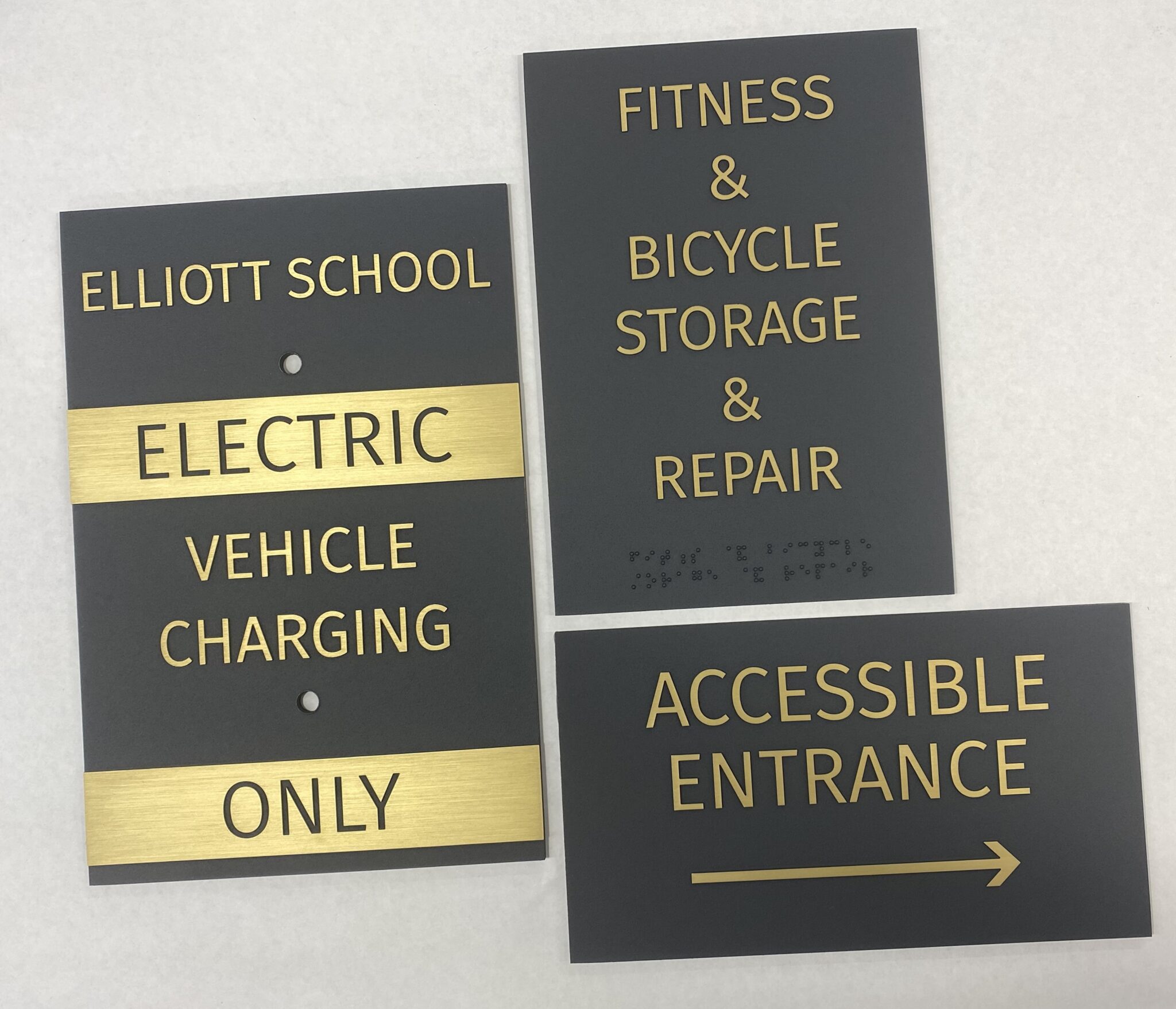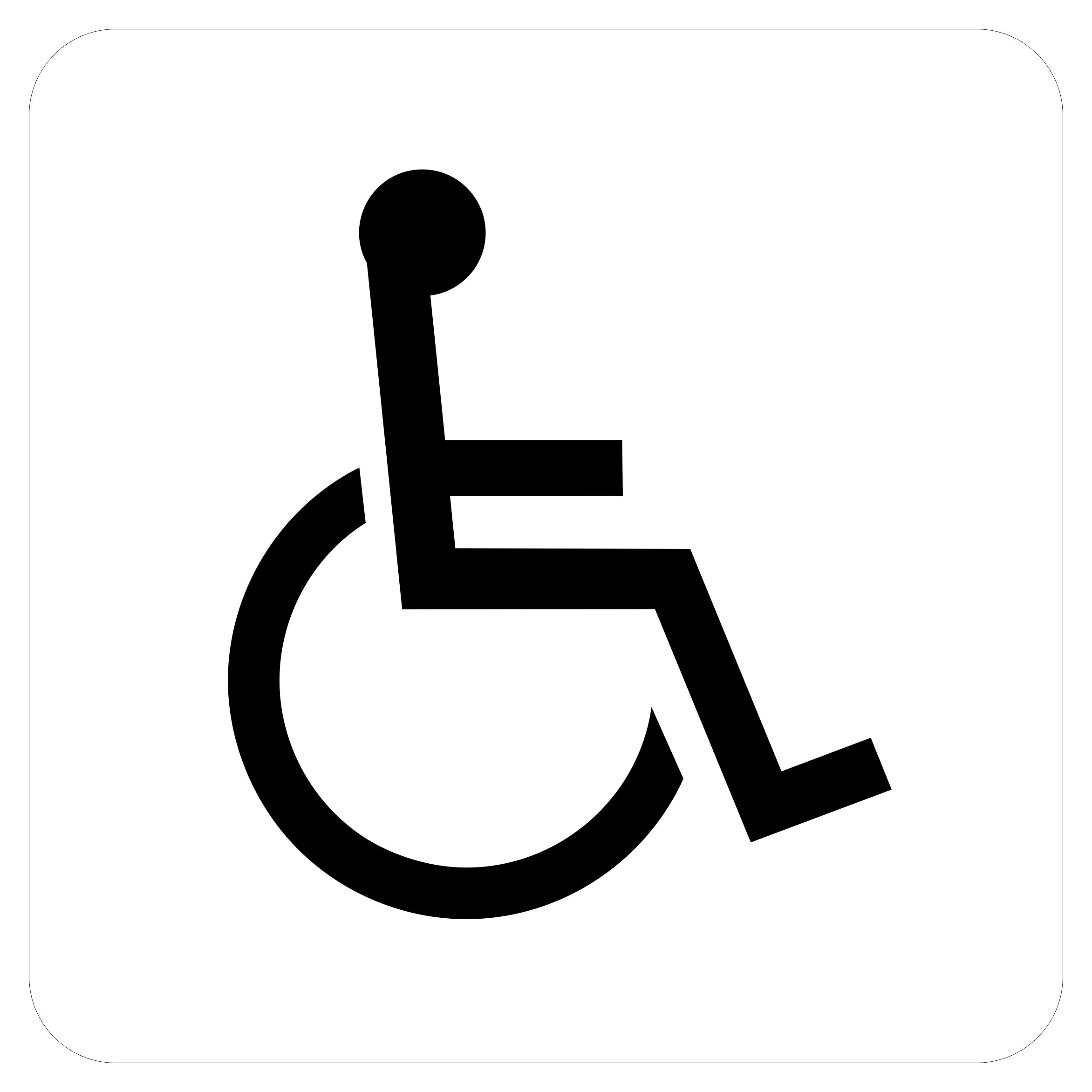The Function of ADA Signs in Complying with Access Specifications
The Function of ADA Signs in Complying with Access Specifications
Blog Article
Checking Out the Key Features of ADA Indications for Enhanced Accessibility
In the realm of access, ADA indications act as quiet yet powerful allies, guaranteeing that spaces are comprehensive and accessible for people with specials needs. By incorporating Braille and tactile aspects, these indications damage obstacles for the visually impaired, while high-contrast color design and readable fonts cater to varied visual needs. Moreover, their critical placement is not approximate however rather a computed initiative to facilitate seamless navigating. Yet, past these functions lies a much deeper narrative regarding the evolution of inclusivity and the continuous dedication to producing fair areas. What more could these signs represent in our search of universal availability?
Significance of ADA Compliance
Ensuring compliance with the Americans with Disabilities Act (ADA) is essential for promoting inclusivity and equivalent gain access to in public areas and workplaces. The ADA, enacted in 1990, mandates that all public centers, companies, and transport services suit people with handicaps, ensuring they appreciate the exact same legal rights and chances as others. Compliance with ADA requirements not just satisfies lawful commitments but also enhances an organization's credibility by demonstrating its commitment to diversity and inclusivity.
One of the key facets of ADA conformity is the execution of easily accessible signs. ADA indicators are made to make certain that individuals with specials needs can conveniently navigate with buildings and rooms. These signs have to stick to details standards concerning dimension, font style, shade comparison, and placement to ensure exposure and readability for all. Correctly executed ADA signage helps get rid of barriers that people with impairments commonly experience, consequently advertising their independence and confidence (ADA Signs).
Moreover, sticking to ADA policies can alleviate the danger of lawful effects and potential penalties. Organizations that stop working to follow ADA guidelines might face claims or penalties, which can be both monetarily troublesome and harmful to their public image. Hence, ADA compliance is integral to fostering a fair setting for every person.
Braille and Tactile Elements
The consolidation of Braille and tactile aspects right into ADA signage symbolizes the concepts of accessibility and inclusivity. These features are crucial for individuals that are blind or visually damaged, enabling them to navigate public areas with higher freedom and confidence. Braille, a responsive writing system, is vital in providing composed details in a format that can be easily perceived through touch. It is commonly placed below the matching message on signs to make sure that individuals can access the information without aesthetic aid.
Responsive aspects extend past Braille and include raised characters and symbols. These parts are created to be noticeable by touch, allowing people to determine room numbers, bathrooms, leaves, and other critical areas. The ADA sets particular guidelines concerning the size, spacing, and positioning of these responsive aspects to maximize readability and make sure uniformity throughout various environments.

High-Contrast Color Pattern
High-contrast color design play a critical function in enhancing the presence and readability of ADA signage for people with visual impairments. These plans are important as they take full advantage of the difference in light reflectance in between message and history, making sure that signs are quickly discernible, even from a range. The Americans with Disabilities Act (ADA) mandates using specific shade contrasts to fit those with restricted vision, making it a vital facet of conformity.
The efficacy of high-contrast shades hinges on their capability to stand apart in numerous lighting conditions, consisting of poorly lit atmospheres and areas with glow. Normally, dark text on a light history or light text on a dark background is utilized to accomplish ideal contrast. As an example, black message on a white or yellow history offers a stark aesthetic difference that assists in you can check here quick recognition and understanding.

Legible Fonts and Text Size
When taking into consideration the style of ADA signage, the option of readable typefaces visit this page and ideal message dimension can not be overstated. The Americans with Disabilities Act (ADA) mandates that font styles must be not italic and sans-serif, oblique, manuscript, very decorative, or of uncommon kind.
The size of the text likewise plays an essential duty in access. According to ADA standards, the minimal text elevation must be 5/8 inch, and it ought to raise proportionally with watching range. This is specifically essential in public areas where signage requirements to be checked out promptly and properly. Consistency in text dimension adds to a cohesive aesthetic experience, helping individuals in browsing atmospheres effectively.
In addition, spacing in between letters and lines is integral to readability. Appropriate spacing prevents characters from appearing crowded, boosting readability. By sticking to these standards, developers can considerably improve ease of access, guaranteeing that signs offers its intended purpose for all people, no matter of their aesthetic capacities.
Reliable Placement Strategies
Strategic placement of ADA signage is important for making the most of accessibility and guaranteeing compliance with legal criteria. Properly positioned indications guide people with specials needs effectively, facilitating navigating in public rooms. Trick factors to consider consist of distance, elevation, and visibility. ADA guidelines stipulate that indications must be installed at a height between 48 to 60 inches from the ground to ensure they are within the line of sight for both standing and seated individuals. This typical height variety is important for inclusivity, making it possible for mobility device users and individuals of varying heights to accessibility information easily.
Additionally, indicators have to be put beside the latch side of doors to allow simple recognition prior to entry. This positioning assists people locate rooms and areas without obstruction. In cases where there is no door, signs ought to be located on the nearest adjacent wall. Uniformity in indicator positioning throughout a center enhances predictability, lowering complication and enhancing total individual experience.

Verdict
ADA signs play an essential function in promoting availability by incorporating attributes that resolve the requirements of individuals with impairments. These elements jointly foster an inclusive environment, highlighting the significance of ADA compliance in guaranteeing equivalent accessibility for all.
In the realm of availability, ADA indications serve as quiet yet powerful allies, guaranteeing that rooms are accessible and inclusive for people with impairments. The ADA, established in 1990, mandates that all public facilities, employers, and transportation services suit individuals with disabilities, guaranteeing they delight in the exact same civil liberties and possibilities as others. ADA Signs. ADA indicators are made to make certain that individuals with disabilities can conveniently navigate with structures and spaces. ADA guidelines state that indicators ought to be installed at a height in between 48 to 60 inches from the ground to guarantee they are within the line of view for both standing and seated people.ADA signs play an essential role in advertising ease of access by incorporating functions that deal with the demands of people with impairments
Report this page